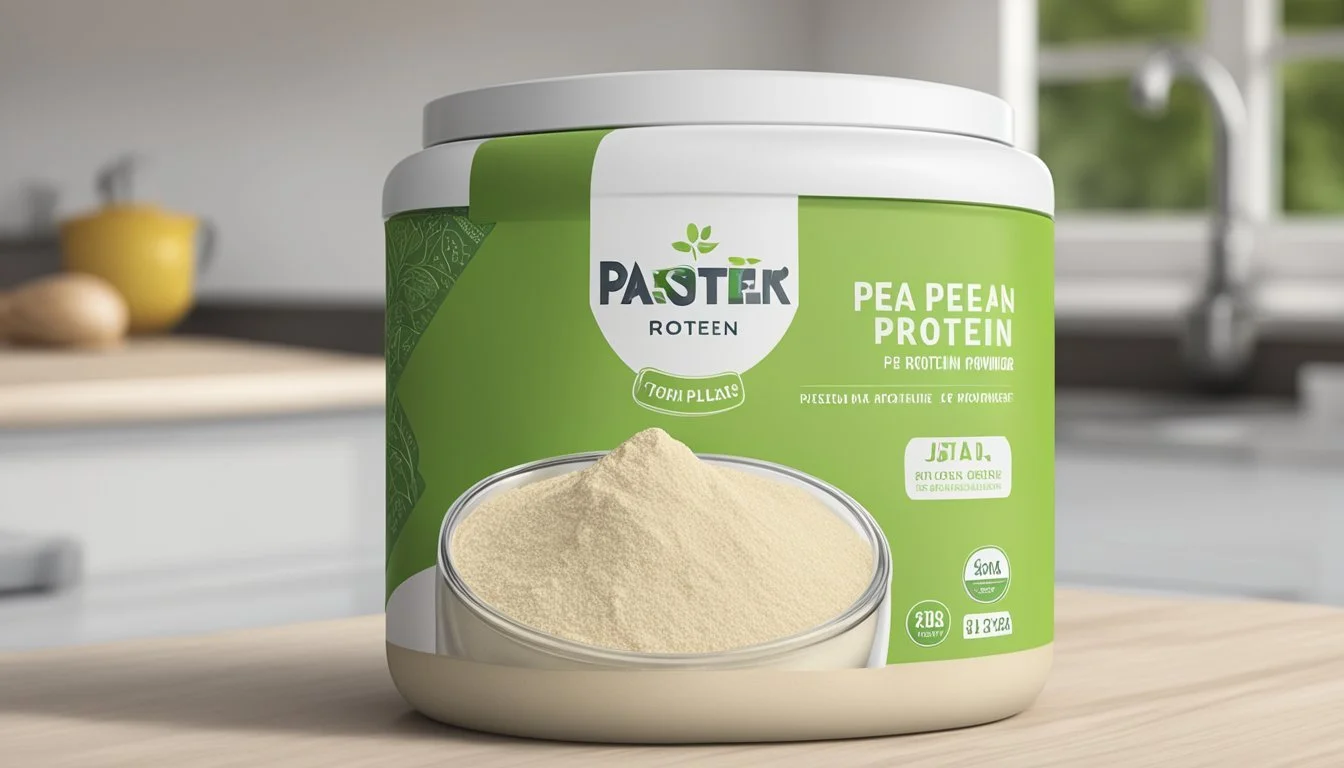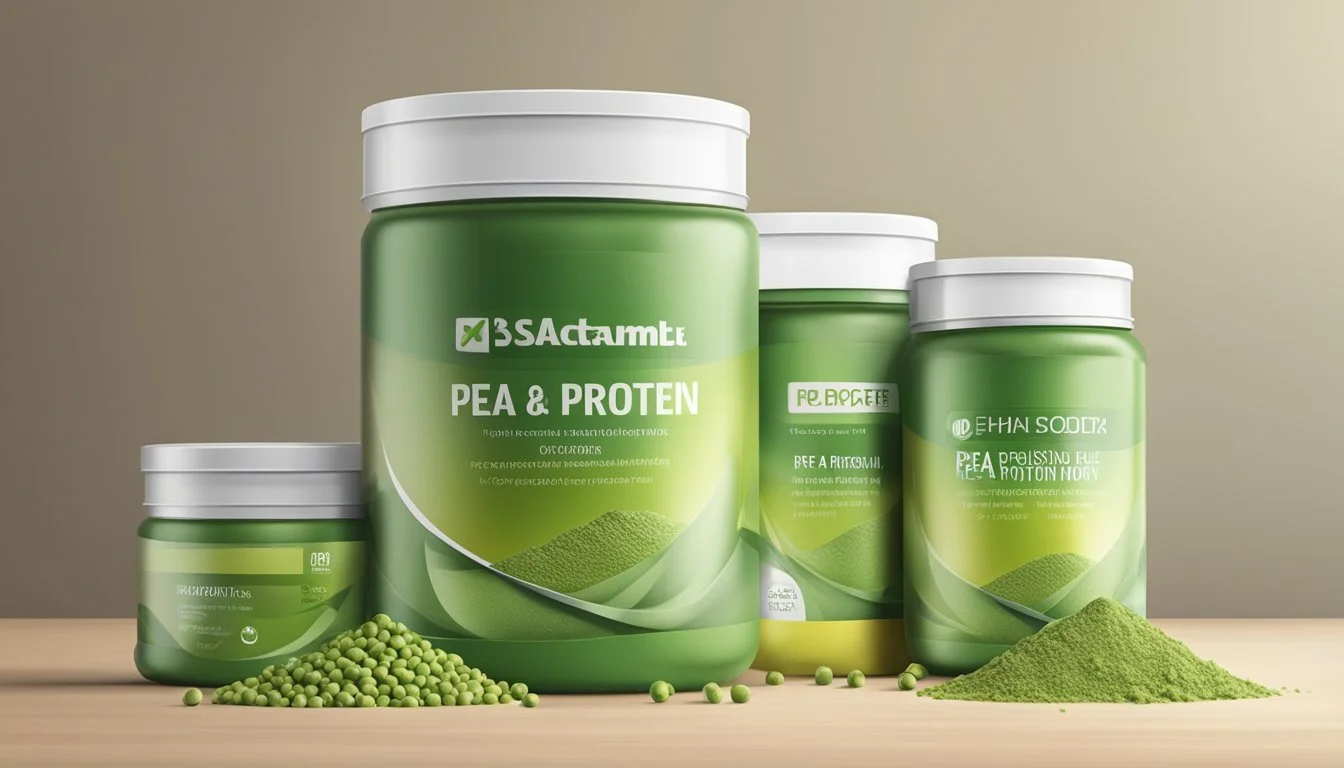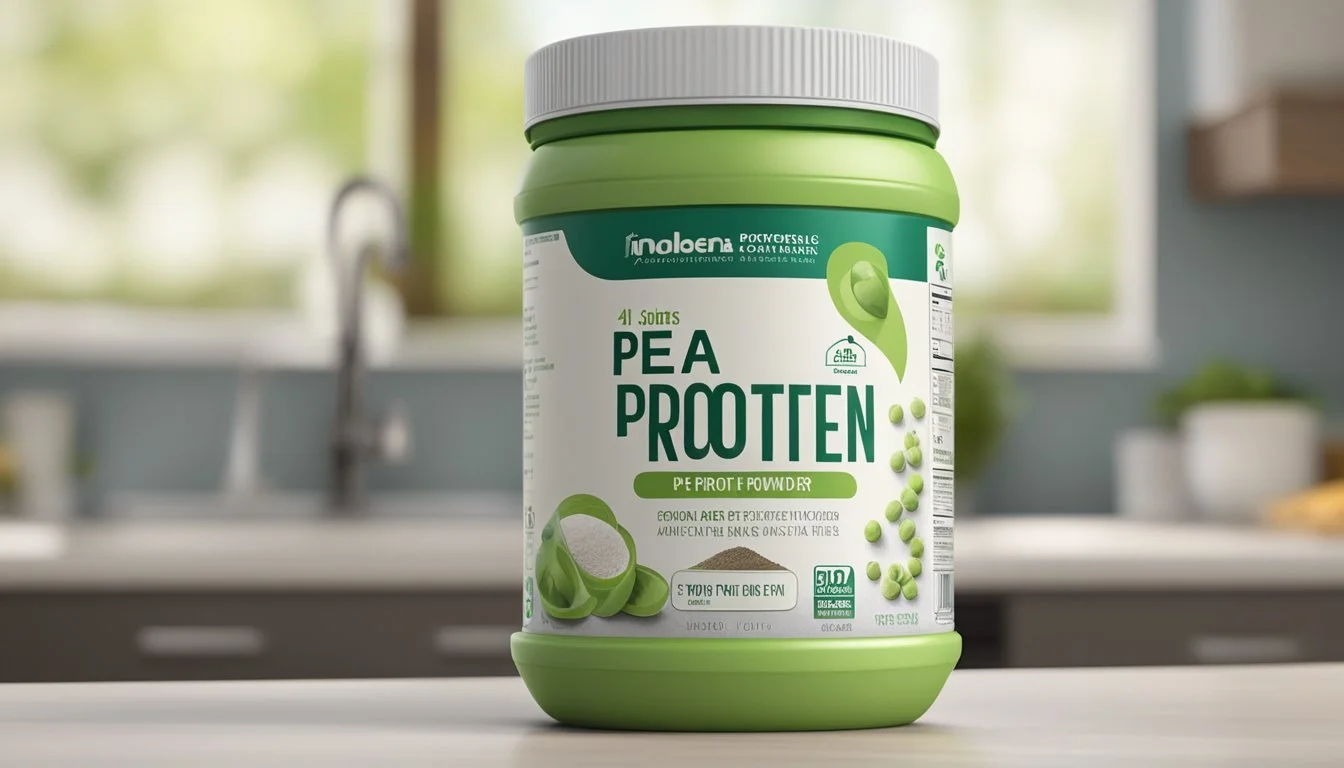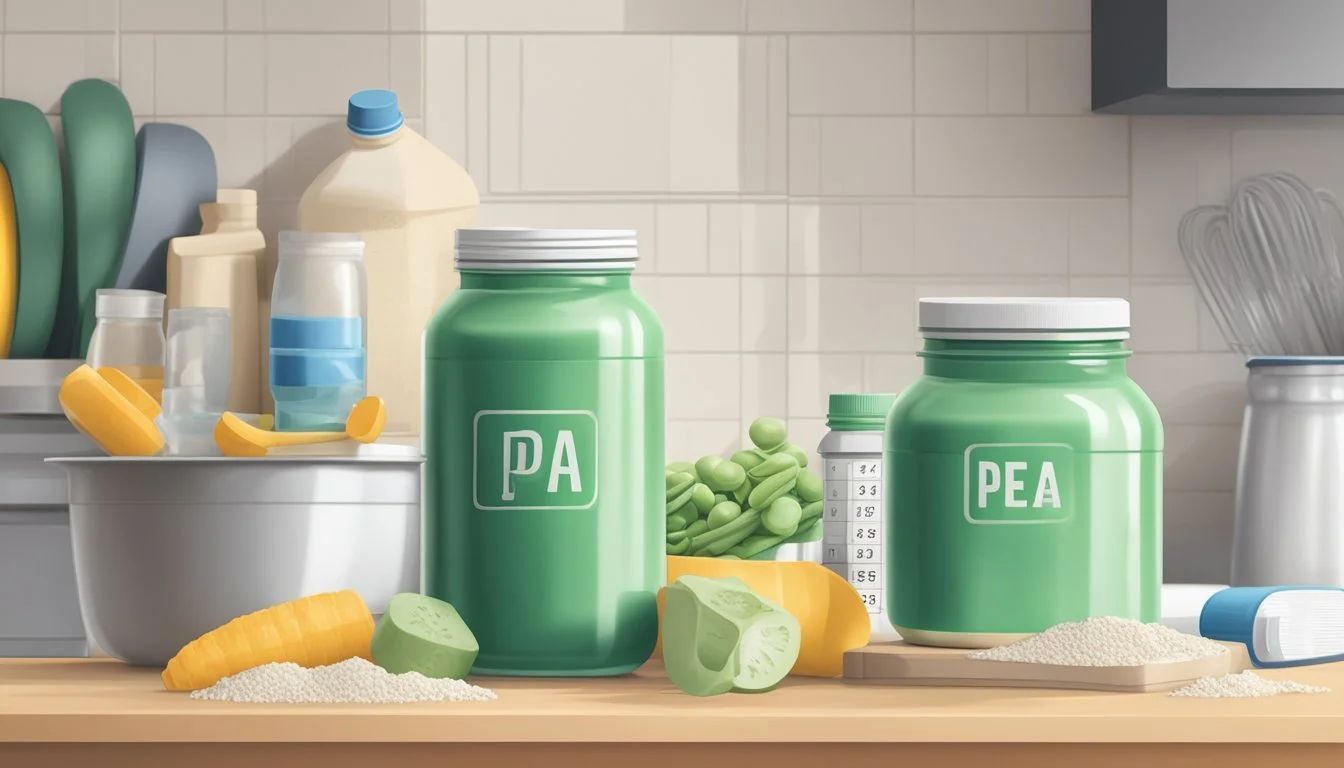Does Pea Protein Powder Go Bad?
Understanding Shelf Life and Storage
Pea protein powder is a popular supplement choice among vegans, vegetarians, and those with lactose intolerance, as it offers a substantial plant-based protein source. Like other protein powders, it comes with an expiration date, which consumers often use as a guideline to determine the product's freshness and viability. However, it's important to note that the expiration date is indicative of when the pea protein powder may begin to lose its peak quality rather than an absolute marker for safety.
While pea protein powder is generally shelf-stable and safe to consume slightly past its best-by date, its shelf life can be influenced by a variety of factors, including how it's stored. Proper storage in cool, dry conditions helps to prolong the product's usability. Conversely, exposure to heat, moisture, and air can expedite degradation. Over time, protein powders may also experience a gradual decline in their nutritional value. This is why consumers should be attentive to changes in smell, taste, and texture, as these can signal that the powder is no longer at its best quality.
Storage conditions aside, the nutritional integrity of pea protein powder is a prime concern for users relying on it for dietary supplementation. While an expired pea protein powder may not necessarily pose a health risk, its efficacy in providing the desired nutritional benefits might be compromised after the expiration date. Users may experience lessened protein content or a decrease in the powder's ability to dissolve properly in liquids. Hence, it's recommended to observe the powder for any signs of spoilage and to consider both the expiration date and storage conditions when assessing its quality.
Understanding Protein Powders
Protein powders come in various forms derived from different sources, each with unique properties. They cater to a wide range of dietary preferences and nutritional needs.
Types of Protein Powders
Protein powders are dietary supplements designed to help individuals increase their protein intake. They vary in composition, source, and digestion rate. Here are the most common types:
Whey Protein: A by-product of cheese production, whey protein is known for its rapid digestion and abundance of essential amino acids.
Casein Protein: Derived from milk, casein is digested more slowly, providing a steady release of amino acids.
Soy Protein: A complete plant-based protein containing all essential amino acids and beneficial isoflavones.
Hemp Protein: Sourced from hemp seeds, this protein is rich in omega-3 fatty acids and is a good option for those seeking a vegan protein source.
Rice Protein: Protein extracted from brown rice; often combined with other plant proteins to achieve a complete amino acid profile.
Plant-Based Proteins
Within the realm of plant-based proteins, individuals who follow vegan or vegetarian diets have various options:
Soy Protein: Often considered the most complete plant protein, it's suitable for those who are lactose intolerant or allergic to dairy.
Pea Protein: Extracted from yellow split peas, this is a popular choice among vegans and people with allergies to dairy or soy.
Hemp Protein: Besides protein, it provides essential fatty acids and fiber, making it a nutrient-dense option.
Rice Protein: While low in lysine, rice protein is hypoallergenic and easily digestible.
Animal-Based Proteins
Animal-based protein powders are primarily derived from dairy and are favored for their complete amino acid profiles and high bioavailability:
Whey Protein: A fast-absorbing protein that aids in muscle recovery and growth, suitable for post-workout consumption.
Casein Protein: Because it digests slowly, casein is often recommended to be taken at night to support muscle repair during sleep.
Egg White Protein: A dairy-free option for those looking for a high-quality, animal-based protein.
These protein powders serve as versatile ingredients in smoothies, shakes, and various recipes to boost protein content and support dietary goals.
Characteristics of Pea Protein Powder
Pea protein powder, extracted from yellow peas, is renowned for its high protein quality, inclusive amino acid profile, and its iron content. It's often compared to other protein powders for its distinct taste, texture, and nutritional credentials.
Nutritional Profile
Pea protein powder is rich in protein and iron, boasting a substantial nutritional value that appeals to those seeking a plant-based supplement. On average, a 30-gram serving typically contains:
Protein: 24 grams
Iron: 5 milligrams
Calories: 120
This composition underlines its adequacy for muscle repair and overall dietary iron needs. The presence of lysine, an essential amino acid often limited in plant proteins, further enhances its profile.
Taste and Texture
The flavor of pea protein is mild and slightly earthy, differentiating it from other plant-based protein powders. Its texture can be characterized as:
Slightly gritty, yet blendable
Less smooth compared to whey protein
The textural difference may be noticeable in shakes and smoothies, influencing consumer preference. Culinary adaptation is often employed to integrate pea protein seamlessly into diets.
Amino Acid Composition
Pea protein is often highlighted for its amino acid composition, containing all nine essential amino acids, making it a complete protein. Notably, it has high levels of:
Branched-chain amino acids (BCAAs): essential for muscle protein synthesis
Arginine: supports blood flow and heart health
Lysine: necessary for tissue growth and repair
These characteristics make pea protein a comparable alternative to animal-based proteins, suitable for individuals who require a diverse amino acid intake for their health and fitness goals.
Pea Protein Powder Shelf Life
Pea protein powder is known for its robust shelf life, which typically ranges from 1 to 2 years. This span is crucial for maintaining both its quality and nutritional content. Proper storage conditions play a significant role in preserving its shelf stability, while the expiration date provides a reliable estimate of its safety for consumption.
Factors Affecting Shelf Life
The stability of pea protein powder can be influenced by several factors:
Storage Conditions: To maximize shelf life, store pea protein powder in a cool, dry place away from direct sunlight. The ideal storage temperature should be consistent and moderate, while excessive humidity can cause clumping and spoilage.
Packaging: Proper packaging is essential. An airtight container or sealable pouch that limits exposure to air and moisture can help maintain the quality of the powder.
Ingredients: Additives and preservatives in the pea protein powder can impact shelf life. Preservative-free options may have a shorter life span.
Manufacturing Practices: High-quality manufacturing processes can also contribute to longer shelf life through reduced exposure to contaminants and better ingredient stability.
Expiration Date and Safety
Pea protein powders are marked with an expiration date which acts as a safety guideline:
Expiration Date: This date, usually found on the packaging, specifies the time frame within which the manufacturer estimates the protein powder will remain at peak quality. After this date, the protein powder may start to degrade in terms of flavor, texture, or nutritional value.
Safety: Consuming pea protein powder after the expiration date is not inherently unsafe, but the product may not meet its original quality standards. While it may not be harmful shortly after the expiration date has passed, older protein powders potentially carry the risk of spoilage, especially if they show signs of odor, discolouration, or clumping.
To ensure safety and enjoy the full benefits of pea protein powder, it is best to adhere to storage guidelines and consume the product before its expiration date.
Signs of Spoilage in Protein Powders
Protein powders can exhibit various signs of spoilage that are detectable through visual examination and smell. Recognizing these indicators can help determine if the protein powder has gone bad.
Visual and Olfactory Indicators
When protein powder begins to spoil, one may notice discoloration or a development of spots which could indicate mold. Mold growth is a clear sign that protein powder has been compromised by bacteria or fungi, and should not be consumed. Another strong visual sign of spoilage is the presence of clumping within the powder. Clumping often occurs when moisture has infiltrated the packaging, leading to possible bacterial growth.
The scent of the powder is also a reliable indicator of its condition. A rancid smell—often associated with a sour or off odor—signals that the protein has oxidized and may no longer be safe for consumption. The absence of the product’s original, mild aroma and replacement with any unpleasant or strong odors should raise concern.
Texture Changes
The texture of protein powder is designed to be fine and easily mixable with liquids. Any deviation from this expected consistency can be an indication of spoilage. If the protein powder has developed a gritty or chalky texture, or if it resists dissolving properly in liquid, it's possible that the protein has degraded or moisture has affected the product. A bitter taste is another telltale sign, as fresh protein powders should not have a noticeably bitter flavor. If the taste is off, it likely means that the protein powder has undergone chemical changes and should not be used.
Proper Storage and Handling
The longevity and quality of pea protein powder greatly depend on how it is stored and handled. By creating an optimal environment and protecting the product from contaminants, one ensures both safety and preservation of quality.
Maintaining Optimal Conditions
To maintain the integrity of pea protein powder, storage in a cool, dry place away from direct light is essential. Ideal conditions include:
Temperature: Aim for a steady temperature close to 70°F (21°C).
Humidity: Low humidity levels are preferable to avoid clumping.
Light: Store in a dark space or opaque container to minimize light exposure.
Using the right packaging also plays a crucial role. Pea protein powder should be kept in an airtight container to prevent moisture from entering, which can lead to spoilage. If the original packaging is not resealable, transferring the contents to a container that can be sealed tightly is advisable.
Preventing Contamination
Protecting pea protein powder from contaminants ensures both safety and quality. Some key preventative measures include:
Always use a clean scoop or utensil to handle the powder.
Avoid exposure to air by sealing the container promptly after use.
Do not introduce any liquids or wet objects into the powder, as this introduces moisture that can harbor bacterial growth.
Following these guidelines will help to extend the shelf life of the pea protein powder, retaining its nutritional value and preventing the development of off-flavors or potentially harmful bacteria.
Common Queries About Consuming Protein Powders
Protein powders are a convenient supplement for many individuals, ranging from bodybuilders to those managing weight, but their consumption comes with questions about safety and potential health effects.
Safe Consumption Practices
When incorporating protein powder into a diet, it is crucial to consider the appropriate serving sizes, which may differ between men and women. It is generally safe for adults to consume a protein supplement as part of a balanced diet. However, excessive protein intake can lead to health issues and should be monitored. Safe consumption practices include:
Reading Labels: Always check for serving suggestions and adhere to them strictly.
Balanced Diet: Ensure protein powder supplementation does not displace other vital nutrients in one's diet.
Hydration: Maintain adequate fluid intake to assist in muscle recovery and overall health.
Consultation with Healthcare Provider: Especially important for those with pre-existing health conditions or allergies.
For most adults, including bodybuilders and those engaging in regular intense physical activities, higher protein intake may be appropriate for muscle recovery and growth. They should be vigilant to not surpass the upper intake levels to prevent adverse effects.
Health Implications and Side Effects
Protein powders, including pea protein, are generally considered safe for healthy individuals. However, some may experience side effects, particularly if they have specific allergies or sensitivities. Common health implications and side effects include:
Digestive Issues: Consuming high amounts of protein powder may cause bloating, gas, or other gastrointestinal discomfort.
Kidney Stress: Excessive protein can strain the kidneys over time, particularly in individuals with pre-existing kidney conditions.
Allergic Reactions: Some protein powders may contain allergens such as gluten, dairy, or soy.
Metal Content: Some concerns have been raised about heavy metal content in various protein powder products.
Individuals interested in using protein powders for weight management must consider these factors and choose a product that aligns with their health goals and dietary restrictions. As always, it is recommended to consult a healthcare professional before starting any new supplement regimen.
Impact of Protein Powders on Fitness Goals
Protein powders, such as pea protein, can significantly contribute to muscle development and weight management when coupled with consistent exercise and a balanced diet.
Promoting Muscle Growth
Pea protein powder is a plant-based protein source rich in essential amino acids necessary for muscle synthesis. Particularly, it contains branched-chain amino acids (BCAAs) like leucine, isoleucine, and valine which are crucial for muscle growth. These amino acids help to:
Stimulate muscle protein synthesis: BCAAs activate pathways in the body that promote muscle building, especially after resistance training.
Enhance muscle recovery: Consuming protein soon after exercise can reduce muscle damage and improve recovery times.
For those engaging in resistance training, adding pea protein to one's diet can support the increase of muscle mass and strength. Its plant-based origin makes it a suitable option for individuals with dietary restrictions or those avoiding dairy products like whey protein.
Supporting Weight Management
In addition to muscle growth, pea protein powder has properties that assist in weight and fat loss. It offers a feeling of satiety, which means those who consume it may feel fuller for longer periods, potentially reducing overall caloric intake. Key points include:
High-protein content: Intake of high protein diets has been associated with increased thermogenesis and satiety, leading to a decrease in body weight and fat mass.
Low in calories: Pea protein powder provides a significant amount of protein with relatively few calories, aiding in the creation of a calorie deficit for weight loss.
While protein powders can support fitness goals, they are most effective when used in conjunction with a well-rounded exercise routine and a nutritious diet. They are not a standalone solution but rather a supplement to aid in the achievement of specific health and fitness objectives.
Assessing the Quality of Protein Powders
When evaluating protein powders, consumers should consider the protein content and quality, the presence of any additives, and nutritional value to ensure they are getting a product that meets their dietary needs and quality standards.
Quality Indicators
Key indicators of quality in protein powders include protein content and protein quality. Protein content is generally quantified in grams per serving, and a higher protein content per serving can indicate a more concentrated source of protein. The quality of the protein is assessed by its amino acid profile and digestibility. A protein's biological value (BV), for instance, measures how efficiently the body can utilize the protein. Pea protein, derived from yellow peas, boasts a high biological value, making it a potent plant-based protein source.
Another critical aspect of quality is freshness. A protein powder's shelf-life can vary, and freshness is often indicated by the product's expiration or best-by date. Manufacturers are expected to test their products to determine this date, which ensures the consumer can expect the protein to retain its nutritional value and quality up to that point.
Additives and Supplements
Protein powders can contain various additives that may affect the overall nutritional value. Consumers should scrutinize the ingredient list for any fillers or additional supplements that may be present. Common additives include:
Sweeteners (natural, like stevia, or artificial)
Flavors (natural or artificial)
Thickeners (such as guar gum)
Preservatives
A product's nutritional label will outline these ingredients, and products with a short list of recognizable items tend to be less processed. It's also vital to observe the sugar content; excessive sugar can undermine the health benefits of a protein supplement.
Legally, the FDA does not approve dietary supplements like protein powders before they are sold, but they do regulate them. Manufacturers must ensure their protein powders are safe and that any claims made about them are truthful and not misleading. If a product is found to contain unsafe ingredients or if its labeling is misleading, the FDA can take action against the manufacturer.
When choosing a protein powder, it's essential to consider these factors to select a high-quality product that aligns with health goals and dietary preferences.








